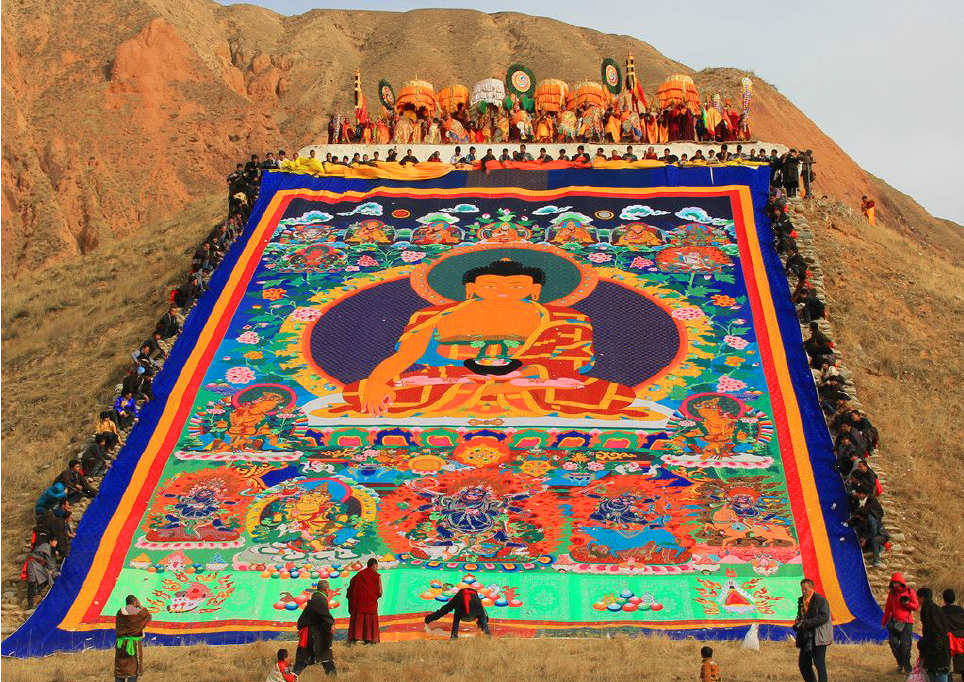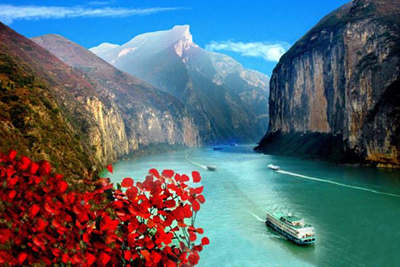Tibetan New Year Festival
Losar is the Tibetan word for "New Year". Losar Festival in Tibet is the grandest traditional festival for Tibetan people, just like Spring Festival for Han nationality and the Christmas in the West. It marks the beginning of Tibetan New Year. There is nothing different between the monk and ordinary person on the ways of celebration in New Year. The Tibetan New Year is calculated according to the lunar calendar used by the Zang nationality.
Tibetan New Year Festival lasts 15 days from January 1st to January 15st in Tibetan calendar. The festival activities are permeated with strong religious atmosphere, for the belief in Buddhism is widely spread in Tibetan. Tibetan New Year is an important national festival whose form consists of Gods entertainment, human entertainment, celebration and praying.
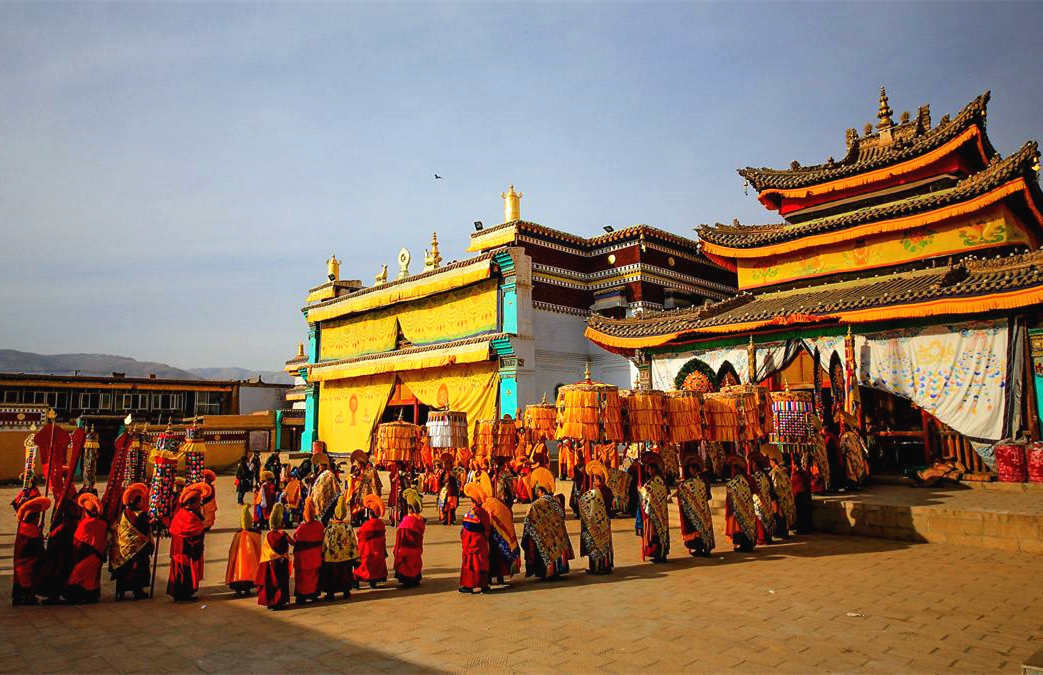
The Tibetan Calendar
Historically, since the systematization of the Tibetan calendar in 1027 A.D., the first day of the first month became fixed as Losar - the New Year. The Tibetan calendar is made up of 12 or 13 lunar months, each beginning and ending with a new moon. A thirteenth month is added every two or three years, thus an average Tibetan year is equal to the solar year. Tibetan people follow a lunar calendar, so the date of Losar changes from year to year.
When is Tibetan New Year 2021?
The Tibetan New Year 2021 falls on 12 February, 2021
| Year | Date | Day |
| 2021 | Feb. 12 | Friday |
| 2020 | Feb. 24 | Monday |
Origin and History of Tibetan New Year Festival
The Tibetan calendar can date back to around 100 B.C. The four seasons were calculated by the phases of the moon and the rotation of the stars. When the spring was warm and the flowers bloomed, people gathered Yalong area and had a party to celebrate the "Assan Festival" of the New Year. According to records, The Tibetan king Budd Gongjia also visited the nearby sacred mountain to pray. Year after year, this event gradually became a regular celebration and marked the beginning of the Tibetan calendar.
As agriculture was developed gradually in the Yalong area, farmers would also have this party to celebrate their harvest when the crops were mature. People would celebrate the festival until they harvest the wheat.
It is said that, before the Tang Dynasty, the moment of wheat ripening was the day of the New Year. Later, the relatively close contacts were appeared between Tang and Fan, for the Tang Dynasty`s princess Wencheng married into Tibet. Many cultures, including celestial almanac, from central plains gradually spread into Tibet as the cultural exchanges between central plains and plateau area became more and more frequently. Then, the habit of treating the moment of wheat ripening as the New Year was changed into celebrating the New Year with Han at the same time.
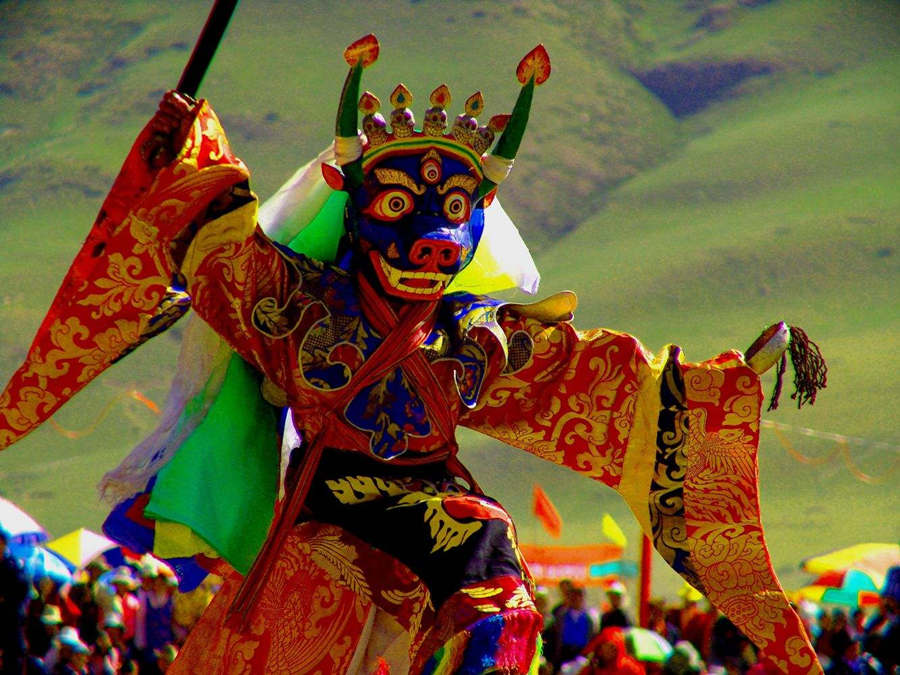
Preparation of Tibetan New Year Festival
Actually, preparations for Losar - the Tibetan New Year celebration - start a month or even two months earlier. Tibetans buy food, clothing, furniture, and decoration materials for the coming celebrations. On the 19th day of the twelfth lunar month, tradition says that it is a day for cleaning. People would clean their houses very thoroughly to sweeps away bad luck.
Customs and Habits
There are many differences between Tibetan and Han people in the ways of New Year festival celebration. All families without exception will make preparations for the Tibetan New Year when the lunar December is oncoming. Several days before the New Year, all old and young men need to have their head shaved, and all old and young women need to wash and comb their hair.
It means that there are some sorrows and grieves within family or people's heart if they don't make their hair done. Washing and combing will bring next year's good luck and happiness to people. The up and down of houses, the inside and outside of yards, the paths of village even each corner of farmland will be cleaned up from December 28th in Tibetan calendar.
Before celebrating the Tibetan New Year, the men come from different stockaded villages will ride to the "Holy Mountain" or saintly mountain to cut some branches of BaiXiang tree, and then they pack it to home. These branches are the main raw material which will be sacrificed to the God “Weisang” during the festival.
The women will brew barley wine or mixed wine, fly various kinds of oily snack and make butter for the New Year celebration. Each Household will carries the garbage and rank grass they've cleared to their respective farmland. These garbage and rank grass will be fired in the morning of the Lunar New Year's Day.
On the last day of the year, homes are freshly painted, families dress up in new clothes, good food and special dishes are cooked. People then honor the gods in their household shrines and place offerings before them. Also, monasteries are all deckled up in the finest decorations and a Blessing Ceremony for the New Year is performed on the first day of Losar.
Traditionally, the New Year celebrations begin on December 29th in Tibetan calendar, that is, the day before the Tibetan New Year's Eve. On this day, people will move away the old door and window curtains, and then put on the new one. Some auspicious pattern, like a cross, will be painted on door, beam and kitchen. All these new stuffs form a festive atmosphere.
On Tibetan New Year's Eve, in some places of Tibet, people will stay together with family to enjoy a family Reunion Dinner named “Gutu”. The “Gutu” is a kind of gruel which consists of flour pimple, mutton and sapodilla. Then, the whole family use Zanba to knead an evil female and two bowls. People put scraps and bone from “Gutu” into that two bowls.
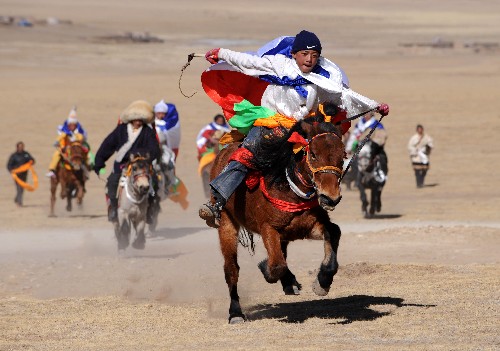
Tibet New Year Celebration
By tradition, the most important thing on the first day of Tibetan New Year is to seek "holy water". In the morning, housewives would get up very early, and cook a pot of barley wine for the family. When dawn breaks, they head for a nearby river, or well, to fetch the first bucket of water. For the "holy water", the family would be blessed with good luck for the New Year.
The custom that day is to make a traditional noodle soup called "Guthuk". It is made from nine different ingredients including dried cheese and various grains. This dish is served with small dumplings. The dumplings are stuffed with one of various things such as chilies, salt, wool, rice and coal.
The ingredients one finds hidden in one's dumpling are supposed to be a lighthearted comment on one's character. Wool means "good-heartedness", and coal "black heart". It is a good way of merrymaking. After dinner, people let off firecrackers and torches are used to rid the homes of evil spirits which may be lurking.
Also, family member will greet each other with well-meaning wishes - "Tashi Delek". In the coming two weeks of celebrations, Tibetans will also exchange New Year's greetings, worship gods, drink together, enjoy singing and dancing, and horse-racing.
An appointed woman will throw that evil female and two bowls out of house, and a man will set fire to a group of hay and closely follow the woman, saying: “the devil out, the devil out”. Let the hay, an evil female and two bowls be burnt to ashes. At the same time, the children set off firecrackers to drive away evil and usher in a propitious new year.
In the following days of celebrating Tibetan New Year, people start going out or treating each other. On the third day, each family will hold the activity of "stripping" to renew the prayer flags, and burn plants on the nearby hilltops. From the fourth day to the fifteenth day, it is generally the Tibetan New Year's entertainment time. On the afternoon of the 15th, there is a special type of guozhuang, namely "Tashi Jie", which means the end of the Tibetan New Year. After the afternoon, each family would unload the New Year's offerings and back to prepare for the busy work.
Sun Buddha Festival for Tibetan New Year
The Sun Buddha Festival is a Tibetan religious festival held in Tibetan regions, like Tibet, Qinghai, Gansu and Yunnan. It is usually held in the Tibetan New Year and Tibetan Shoton Festival. The traditional Sun Buddhism festival is mainly to show magnificent Thangka - the huge cloth Buddha paintings and embroidered Buddha brocade, but it will also be along with some traditional Tibetan drama, singing and dancing, and religious activities. The number of participants, including both monks and ordinary people can reach ten thousand.
Recommended 11-day Tibetan New Year Monlam Festival Tour to Qinghai and Gansu for Sun Buddha event and activities.
Related Reading
